Transmembrane TNF-alpha promotes chemoresistance in breast cancer cells
- PMID: 29559745
- PMCID: PMC6013421
- DOI: 10.1038/s41388-018-0221-4
Transmembrane TNF-alpha promotes chemoresistance in breast cancer cells
Abstract
Chemoresistance remains a major obstacle to successful treatment of breast cancer. Although soluble tumor necrosis factor-α (sTNF-α) has been implicated in mediating drug-resistance in human cancers, whether transmembrane tumor necrosis factor-α (tmTNF-α) plays a role in chemoresistance remains unclear. Here we found that over 50% of studied patients expressed tmTNF-α at high levels in breast cancer tissues and tmTNF-α expression positively correlated with resistance to anthracycline chemotherapy. Alteration of tmTNF-α expression changed the sensitivity of primary human breast cancer cells and breast cancer cell lines to doxorubicin (DOX). Overexpression of N-terminal fragment (NTF) of tmTNF-α, a mutant form with intact intracellular domain of tmTNF-α to transmit reverse signals, induced DOX-resistance. Mechanistically, the tmTNF-α/NTF-ERK-GST-π axis and tmTNF-α/NTF-NF-κB-mediated anti-apoptotic functions were required for tmTNF-α-induced DOX-resistance. In a xenograft mouse model, the combination of tmTNF-α suppression with chemotherapy significantly enhanced the efficacy of DOX. Our data indicate that tmTNF-α mediates DOX-resistance through reverse signaling and targeting tmTNF-α may be beneficial for the treatment of DOX-resistant breast cancer.
Conflict of interest statement
The authors declare that they have no conflict of interest.
Figures
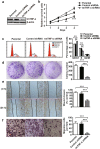
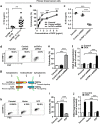
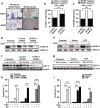
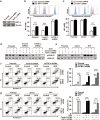
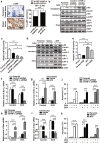
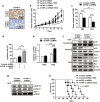

Similar articles
-
Targeting transmembrane TNF-α suppresses breast cancer growth.Cancer Res. 2013 Jul 1;73(13):4061-74. doi: 10.1158/0008-5472.CAN-12-3946. Epub 2013 Jun 21. Cancer Res. 2013. PMID: 23794706
-
Expression of TNF-alpha leader sequence renders MCF-7 tumor cells resistant to the cytotoxicity of soluble TNF-alpha.Breast Cancer Res Treat. 2009 Jul;116(1):91-102. doi: 10.1007/s10549-008-0111-5. Epub 2008 Jul 10. Breast Cancer Res Treat. 2009. PMID: 18618239
-
Effect of resveratrol on doxorubicin resistance in breast neoplasm cells by modulating PI3K/Akt signaling pathway.IUBMB Life. 2018 Jun;70(6):491-500. doi: 10.1002/iub.1749. Epub 2018 Apr 10. IUBMB Life. 2018. PMID: 29637742
-
Long non-coding RNAs in the doxorubicin resistance of cancer cells.Cancer Lett. 2021 Jun 28;508:104-114. doi: 10.1016/j.canlet.2021.03.018. Epub 2021 Mar 22. Cancer Lett. 2021. PMID: 33766750 Review.
-
Targeting metallothionein for prognosis and treatment of breast cancer.Recent Pat Anticancer Drug Discov. 2011 May;6(2):178-85. doi: 10.2174/157489211795328495. Recent Pat Anticancer Drug Discov. 2011. PMID: 21449882 Review.
Cited by
-
Tumour burden and efficacy of immune-checkpoint inhibitors.Nat Rev Clin Oncol. 2022 Feb;19(2):75-90. doi: 10.1038/s41571-021-00564-3. Epub 2021 Oct 12. Nat Rev Clin Oncol. 2022. PMID: 34642484 Review.
-
Suppression of Transmembrane Tumor Necrosis Factor Alpha Processing by a Specific Antibody Protects Against Colitis-Associated Cancer.Front Immunol. 2021 Oct 5;12:687874. doi: 10.3389/fimmu.2021.687874. eCollection 2021. Front Immunol. 2021. PMID: 34675913 Free PMC article.
-
Biomimetic nanotherapy: core-shell structured nanocomplexes based on the neutrophil membrane for targeted therapy of lymphoma.J Nanobiotechnology. 2021 Jun 13;19(1):179. doi: 10.1186/s12951-021-00922-4. J Nanobiotechnology. 2021. PMID: 34120620 Free PMC article.
-
Tumor Necrosis Factor α Blockade: An Opportunity to Tackle Breast Cancer.Front Oncol. 2020 Apr 22;10:584. doi: 10.3389/fonc.2020.00584. eCollection 2020. Front Oncol. 2020. PMID: 32391269 Free PMC article. Review.
-
Activity in MCF-7 Estrogen-sensitive Breast Cancer Cells of Capsicodendrin from Cinnamosma fragrans.Anticancer Res. 2021 Dec;41(12):5935-5944. doi: 10.21873/anticanres.15412. Anticancer Res. 2021. PMID: 34848447 Free PMC article.
References
-
- Arcamone F, Cassinelli G, Fantini G, Grein A, Orezzi P, Pol C, et al. Adriamycin, 14-hydroxydaunomycin, a new antitumor antibiotic from S. peucetius var. caesius. Reprinted from Biotechnology and Bioengineering, Vol. XI, Issue 6, Pages 1101–1110 (1969) Biotechnol Bioeng. 2000;67:704–13. doi: 10.1002/(SICI)1097-0290(20000320)67:6<704::AID-BIT8>3.0.CO;2-L. - DOI - PubMed
-
- Mackey JR, Martin M, Pienkowski T, Rolski J, Guastalla JP, Sami A, et al. Adjuvant docetaxel, doxorubicin, and cyclophosphamide in node-positive breast cancer: 10-year follow-up of the phase 3 randomised BCIRG 001 trial. Lancet Oncol. 2013;14:72–80. doi: 10.1016/S1470-2045(12)70525-9. - DOI - PubMed
-
- Martin M, Ruiz A, Ruiz Borrego M, Barnadas A, Gonzalez S, Calvo L, et al. Fluorouracil, doxorubicin, and cyclophosphamide (FAC) versus FAC followed by weekly paclitaxel as adjuvant therapy for high-risk, node-negative breast cancer: results from the GEICAM/2003-02 study. J Clin Oncol: Off J Am Soc Clin Oncol. 2013;31:2593–9. doi: 10.1200/JCO.2012.46.9841. - DOI - PubMed
-
- Dalpiaz O, al Rabi N, Galfano A, Martignoni G, Ficarra V, Artibani W. Small cell carcinoma of the bladder: a case report and a literature review. Arch Esp Urol. 2003;56:197–202. - PubMed
-
- Filipits M, Pohl G, Stranzl T, Kaufmann H, Ackermann J, Gisslinger H, et al. Low p27Kip1 expression is an independent adverse prognostic factor in patients with multiple myeloma. Clin Cancer Res: Off J Am Assoc Cancer Res. 2003;9:820–6. - PubMed
Publication types
MeSH terms
Substances
LinkOut - more resources
Full Text Sources
Other Literature Sources
Medical
Research Materials
Miscellaneous

